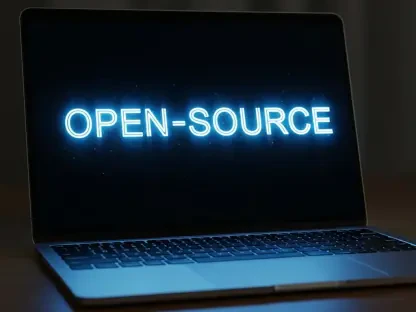In today’s digital landscape, where APIs power everything from financial transactions to healthcare data exchanges, a staggering statistic reveals the stakes: over 90% of web application attacks now target APIs, making them a prime vector for data breaches and unauthorized access. This alarming trend underscores the urgent need for robust security measures tailored to protect these critical interfaces. As organizations grapple with increasingly sophisticated threats like business logic abuse and shadow APIs, two distinct approaches have emerged as cornerstones of API security: Shift-Left Testing and Runtime Protection. These methodologies, while both aimed at safeguarding digital ecosystems, operate at different stages of the software lifecycle and tackle threats in unique ways. This comparison dives deep into their foundations, contrasts their strengths and limitations, and explores how they can work together to fortify API security in an era of relentless cyber threats.
Understanding the Foundations of Shift-Left Testing and Runtime Protection
Shift-Left Testing and Runtime Protection represent two pivotal strategies in the realm of API security, addressing the growing complexity of cyber threats across industries such as e-commerce, finance, and healthcare. Shift-Left Testing focuses on embedding security practices early in the software development lifecycle, prioritizing the identification and resolution of vulnerabilities during the design, coding, and testing phases. By integrating security checks before deployment, this approach aims to prevent flaws from reaching production environments, reducing the risk of costly breaches down the line.
In contrast, Runtime Protection operates in the live, production environment, emphasizing real-time monitoring and immediate threat mitigation. This strategy is designed to detect and respond to attacks as they unfold, addressing dynamic threats that may not be visible during development. It plays a crucial role in identifying issues like unauthorized access or anomalous behavior in API traffic, ensuring that active threats are neutralized swiftly.
Both methodologies hold significant relevance in modern DevSecOps practices, where the speed of development must align with robust security. While Shift-Left Testing builds a secure foundation by catching misconfigurations early, Runtime Protection acts as a critical safety net against evolving threats like shadow APIs or business logic exploitation. Their complementary yet contrasting natures offer organizations a dual lens through which to protect digital assets, balancing proactive prevention with reactive defense in an increasingly interconnected world.
Key Comparisons Between Shift-Left Testing and Runtime Protection
Focus and Timing in the Development Lifecycle
A fundamental distinction between Shift-Left Testing and Runtime Protection lies in their operational timing within the software development process. Shift-Left Testing targets the pre-deployment stages, embedding security into the design, coding, and testing phases. Tools like static code analysis and CI/CD pipeline integrations, exemplified by platforms such as 42Crunch’s OpenAPI audits, enable developers to catch and fix vulnerabilities before they ever reach a live environment, fostering a culture of security-first development.
Runtime Protection, on the other hand, shifts its focus to post-deployment, concentrating on production environments where APIs are actively in use. This approach employs real-time monitoring to detect and mitigate threats as they occur, leveraging solutions like Salt Security’s behavioral analytics to identify anomalies in live traffic. Its strength lies in addressing issues that only manifest under actual usage conditions, ensuring immediate response to active attacks.
The difference in timing highlights a core contrast: Shift-Left Testing acts as a preventative measure to minimize risks before launch, while Runtime Protection serves as a reactive shield, safeguarding systems against threats that emerge in operational settings. This dichotomy shapes how each approach contributes to a secure API ecosystem, with one building resilience upfront and the other maintaining it in real time.
Effectiveness Against Different Types of Threats
When evaluating their impact on various threats, Shift-Left Testing proves highly effective in addressing vulnerabilities rooted in code and configuration errors. By focusing on early detection, it excels at identifying issues like insecure data handling or improper authentication mechanisms before they become exploitable in production. This preemptive strategy significantly reduces the attack surface by ensuring that foundational flaws are corrected during development.
Runtime Protection, however, shines in combating dynamic and sophisticated threats that manifest only during live operations. It is adept at detecting attacks such as “low and slow” tactics or business logic abuse, which often evade static analysis and require behavioral insights to uncover. Platforms like Traceable AI, with their end-to-end tracing capabilities, illustrate how runtime solutions can spot anomalies and multi-step attacks in real-time API interactions.
In the context of API-specific risks like shadow APIs, the two approaches offer distinct advantages. Shift-Left Testing aids in documenting and securing API designs early to prevent undocumented endpoints, whereas Runtime Protection ensures ongoing discovery and defense against such hidden vulnerabilities in active environments. Together, they provide a layered defense, tackling both predictable flaws and emergent threats with tailored precision.
Integration and Impact on Development Workflows
The integration of these security strategies into modern development workflows reveals further contrasts in their application and impact. Shift-Left Testing aligns seamlessly with developer processes, embedding security checks into CI/CD pipelines and IDEs through tools like StackHawk’s developer-centric testing solutions. This close integration empowers developers to address vulnerabilities without disrupting their workflow, fostering collaboration between development and security teams.
Runtime Protection, by contrast, operates primarily in operational environments, often requiring minimal developer involvement but demanding significant oversight from security teams. Solutions like Noname Security’s agentless monitoring focus on production systems, ensuring protection without altering development cycles. This separation can reduce friction for developers but necessitates robust infrastructure to manage real-time data and alerts effectively.
Each approach carries unique benefits and trade-offs. Shift-Left Testing minimizes downstream remediation costs by catching issues early, though it may require initial investments in training and tools. Runtime Protection, while adept at handling unforeseen threats, can introduce operational complexity due to the need for continuous monitoring. Organizations must weigh these factors to determine how each fits into their specific development and security priorities.
Challenges and Limitations of Each Approach
Shift-Left Testing, despite its proactive benefits, comes with notable challenges that can hinder its adoption. A primary obstacle is the need for extensive developer training to integrate security practices effectively into early phases, which can slow down development speed if not managed well. Additionally, this approach cannot address threats that only emerge in runtime scenarios, leaving a gap in protection against dynamic attacks.
Runtime Protection faces its own set of hurdles, particularly in managing the complexity of real-time data analysis. The risk of false positives in anomaly detection can overwhelm security teams, diverting resources from genuine threats. Moreover, it lacks the ability to prevent issues that could have been resolved earlier in the lifecycle, potentially leading to higher remediation costs for flaws that slip through initial stages.
Scalability presents a concern for both strategies. Shift-Left Testing may struggle to maintain consistency across large, distributed teams with varying skill levels, while Runtime Protection can encounter performance overhead in high-traffic environments, impacting system efficiency. Resource implications further complicate implementation, with Shift-Left requiring upfront investment in tools and processes, and Runtime Protection demanding sustained operational support to handle live monitoring demands effectively.
Conclusion and Recommendations for Implementation
Reflecting on the detailed comparison, it becomes evident that Shift-Left Testing and Runtime Protection each play indispensable roles in API security, with Shift-Left excelling in early prevention and Runtime offering vital real-time defense. Their differences in timing, threat focus, and workflow integration highlight unique strengths that, when combined, provide comprehensive coverage across the software lifecycle. Platforms like Cequence Security and Akto.io demonstrate how a blended approach can address both pre-deployment vulnerabilities and production threats effectively.
Moving forward, organizations should prioritize Shift-Left Testing if their focus is on building secure APIs from inception or if they have achieved strong DevSecOps maturity, ensuring developers are equipped to tackle issues early. For those operating in high-risk production environments or requiring immediate threat response, Runtime Protection emerges as the critical choice to safeguard live systems. A balanced strategy integrating both methodologies is often the most robust path, tailored to specific API complexity and resource availability.
As a next step, assessing organizational needs against the backdrop of evolving cyber threats should guide the adoption of these approaches. Investing in training for developers to embrace Shift-Left practices, alongside scalable runtime solutions to handle growing traffic, can fortify defenses. Exploring hybrid tools that bridge both strategies might offer a seamless way to enhance security posture, ensuring APIs remain resilient in an ever-changing digital landscape.









